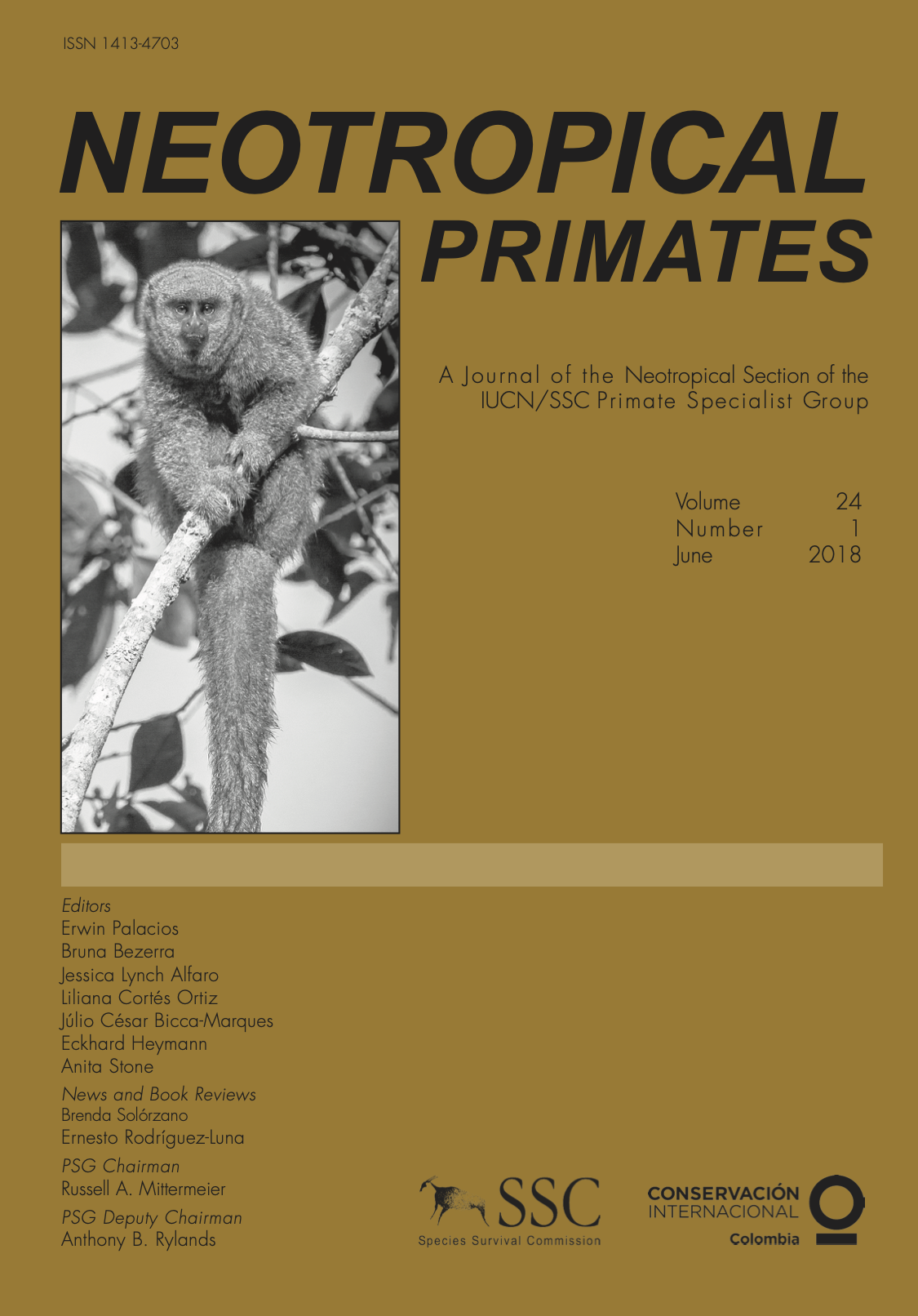Callithrix aurita: a marmoset species on its way to extinction in the Brazilian Atlantic Forest
DOI:
https://doi.org/10.62015/np.2018.v24.106Keywords:
Callitrichids, invasive species, buffy-tufted-ear marmoset, primate conservationAbstract
The buffy-tufted-ear marmoset (Callithrix aurita) is a small primate endemic to the montane regions of the southeastern Atlantic Forest in Brazil. The species was formerly listed as “Vulnerable” (VU) on the Brazilian Official National List of Threatened Fauna Species, but in December 2014 it was re-classified as “Endangered” (EN) as a result of habitat loss, forest fragmentation and, especially, competition and hybridization with invasive marmosets (Callithrix spp.). This article gives an overview of the current conservation status of and field research on C. aurita that includes the objectives set forth by the C. aurita Conservation Project (spearheaded in December 2014 by a group of C. aurita researchers), and the related set of integrated conservation actions. These actions include expanded geographical surveys of C. aurita populations, improvements to a captive C. aurita breeding program, and the establishment of new protected areas as part of a C. aurita metapopulation management program. Despite these current efforts, however, the strengthening and consolidation of urgent conservation actions to protect the buffy-tufted-ear marmoset still depend on a variety of factors, including increased institutional collaboration and augmented financial support. Enhancing institutional and financial backing for C. aurita conservation will improve our understanding of the various challenges involved and, facilitate the rapid development of alternative strategies to mitigate ongoing threats to the species.

Downloads
Published
Issue
Section
License

This work is licensed under a Creative Commons Attribution-NonCommercial-ShareAlike 4.0 International License.


